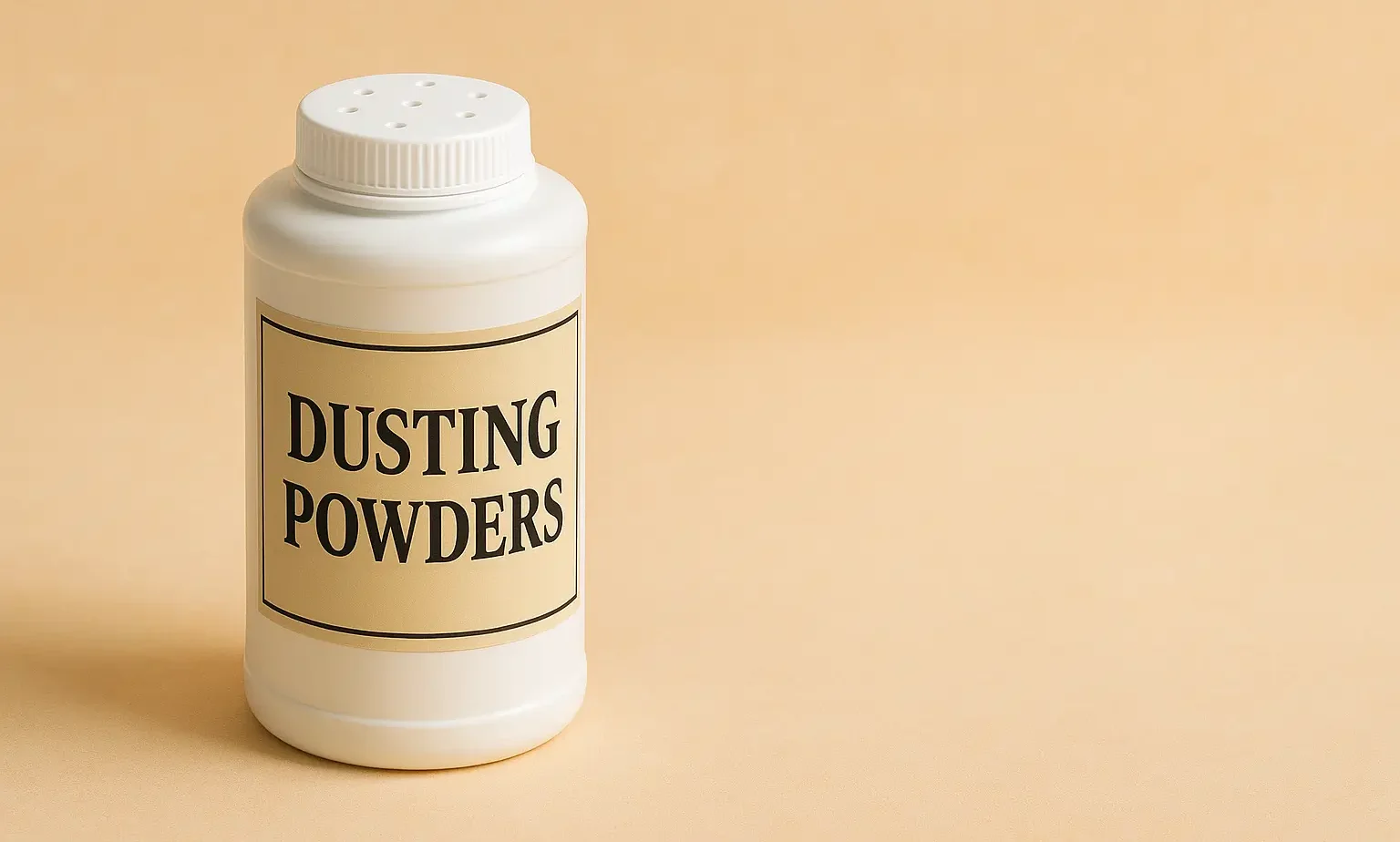- Dusting powders are topical pharmaceutical powders applied to the skin or mucous membranes for various therapeutic purposes.
- They are usually formulated with active ingredients and inert excipients to create a finely ground, free-flowing powder.
- Dusting powders can be used to treat various skin conditions, reduce friction, absorb moisture, or provide a cooling sensation.
Types of dusting powders:

Advertisements
-
Antifungal powders:
- Used to treat fungal infections on the skin, such as athlete’s foot or jock itch.
-
Antipruritic powders:
- Used to relieve itching and inflammation associated with skin conditions like eczema or insect bites.
-
Antiseptic powders:
- Used to prevent infection in minor cuts, scrapes, or burns.
-
Absorbent powders:
- Used to absorb moisture and reduce friction in areas prone to chafing or irritation.
-
Astringent powders:
- Used to reduce inflammation and promote the healing of damaged skin.
Advantages of dusting powders:
-
Easy to apply:
- Dusting powders can be easily sprinkled or applied with a powder puff to the affected area.
-
Non-greasy:
- They do not leave a greasy residue on the skin, making them suitable for patients who prefer a dry feel.
-
Cooling effect:
- Dusting powders often have a cooling effect, which can be soothing for irritated skin.
-
Absorbent:
- They can help absorb moisture and reduce friction, preventing further irritation or chafing.
Advertisements
Disadvantages of dusting powder:
-
Limited drug penetration:
- Due to their topical application, dusting powder may have limited penetration into the skin, which can reduce their effectiveness for some conditions.
-
Inconsistent coverage:
- It can be challenging to achieve uniform coverage with a powder, potentially resulting in uneven drug distribution.
-
Inhalation risk:
- Fine particles can be accidentally inhaled during application, leading to respiratory irritation or other issues.
-
Messy application:
- Applying dusting powder can be messy, as the powder may spread to other surfaces.
Examples of dusting powder:
-
Miconazole powder:
- An antifungal dusting powder used to treat skin infections caused by fungi, such as athlete’s foot or jock itch.
-
Boric acid powder:
- An antiseptic dusting powder that can be used to treat minor cuts, scrapes, or burns.
Advertisements

